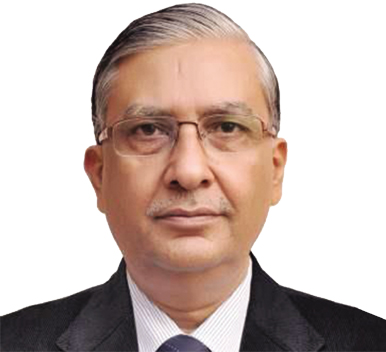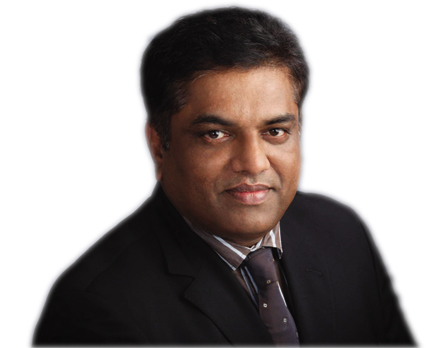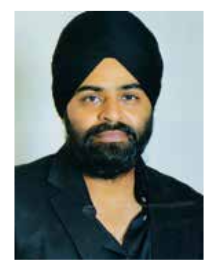
Chief-Commercial, Tata Power Delhi Distribution Limited

Chief-Commercial, Tata Power Delhi Distribution Limited
We have brought down power losses to 10 percent from 53 percent, claims S K Saini, Chief-Commercial, Tata Power Delhi Distribution Limited, in an interaction with ENN’s Gautam Debroy
What is your outlook on the power sector in India?
For any developing country, power is a vital factor. With India also being a developing nation, it also needs to pay attention to revamping the power sector to meet the growing demands. But I personally feel we are lagging behind in our initiatives, possibly due to political reasons. Unless power infrastructure is improved, we can’t see a growing India. Even though our installed capacity is fourth-largest in the world, we are not comparable with countries like the US, China and Russia. Perhaps, there are some structural drawbacks in our system. But I am confident that the new regime at the Centre would give much more emphasis on the power sector.
Can you elaborate on the structural changes necessary to boost the power sector?
As power is a vital and critical factor for our country, there should be a positive push to ensure that it is driven in the right direction. Although allocations are made, the focus is missing. The government needs to have greater engagement with the private sector.
What is happening now is that most of the private players are hesitant to invest in the power sector owing to numerous hurdles and lack of initiatives on the part of the government. Conducive atmosphere needs to be created to attract greater private investment in the power sector.
How is Tata Power Delhi Distribution Limited (TPDDL) contributing to the capital’s power distribution system?
 If you have a look at the erstwhile performance of the Delhi Electricity Supply Board (DESB), you will be able to understand what kind of difference we have made. Before 2002, when TPDDL was not on the scene, there would be up to 53 percent losses, for example, if one demanded power worth `100, one would pay only `47. The losses might have been even more, as there was no accounting system then. Given the huge losses, initially we had to survive only on the government support in terms of loans, grants, subsidies etc.
If you have a look at the erstwhile performance of the Delhi Electricity Supply Board (DESB), you will be able to understand what kind of difference we have made. Before 2002, when TPDDL was not on the scene, there would be up to 53 percent losses, for example, if one demanded power worth `100, one would pay only `47. The losses might have been even more, as there was no accounting system then. Given the huge losses, initially we had to survive only on the government support in terms of loans, grants, subsidies etc.
In July 2002, when we took over, reliability was only 70 percent, whereas it’s 99.94 percent today. Subsequently, huge capital investment was injected into the system for revamping the network, so that there is reliability about continuous power supply. All the big industries and business houses using the Distributed Generation (DG) process previously to meet their power demands stopped using the DG sets system. That’s the kind of change we have made. We have also brought down transmission and distribution losses to 10 percent, thereby saving about `10,000 crore for the Government of Delhi.
Like other power supply and distribution companies, do you also face problems on the financial front?
Basically, the problem is that the tariffs are not cost effective, as it does not represent the exact costs of power purchase and distribution. This leaves revenue gaps. Although this revenue gap is recognised by the regulator, the distribution companies have to struggle for getting the finances to bridge those gaps. Arranging the finances till now for TPDDL hasn’t been much of an issue because of its credentials and because we brought down the losses from 53 percent to 10 percent by achieving beyond the trajectory given by the regulator.
Your hobbies include innovations. Does it also include commercial innovations for
TPDDL?
When we took over this project from the state-run utility, we went through a series of innovative processes. Apart from modernising poor infrastructure, we have also improved the customer relationship management by taking all the stakeholders into confidence, and built up a cohesive environment in our licensed area we started meeting the Residents Welfare Associations (RWAs) and cross-sections of the society to seek their suggestions to improve our services. We have set up more than 5,000 centres for the customers to pay their bills, and replaced at least 14 lakh metres with electronic metres to ensure that there are no leakages in the system. We have also introduced highlyrecognized Systems Applications and Products Industry olutions Utilities (SAP-ISU) billing system.
Is it true that your innovations have been recognised by the Harvard University?
Harvard University students had come and they recognised one of our innovations. In 2008, we had started concentrating on Aggregate Technical and Commercial (AT&C) losses reduction, as we found that there were neglected clusters and under-privileged segments within our license area, like JJ colony and others. While they were consuming electricity, they did not pay bills for not having metres installed. We were facing losses in those areas. So, to get the support of the people in those areas, we started life insurance coverage for them. People with metres in their home were given `1 lakh insurance policy. We also started a drug de-addiction initiative; our people would go for counseling in the slum areas and give them medicine.
We have also set up 170 education centres to give proper education to the people living in those slums. These initiatives have improved our collection from `12 crore per annum to `100 crore per annum. We had spent 1.5 crore on CSR activities last year, and our board had approved ` 8 crore for this year. It was because of these initiatives that we got applause from the Harvard University and from the office of the UK Prime Minister.
You have also been associated with sustainability work. What exactly are the initiatives undertaken by the Tata Power DDL in this domain?
We had taken up the initiative to spread the message of energy conservation through school children. We set up school clubs.
We have almost 500 schools registered with us where as many as 5 lakh students are educated about the benefits of energy conservation from time to time. Especially during the summers, children visit every reachable neighbourhood to spread the message of energy conservation. We are also engaged in tree plantation. We planted almost 30,000 trees last year. We also do water harvesting wherever feasible.
Loose connection
“Most private players are hesitant to invest in the power sector owing to various urdles and lack of government initiatives. Conducive atmosphere should be created to attract greater private investment”





















